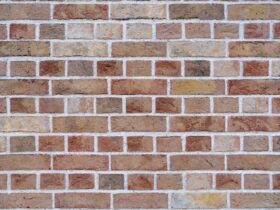Sometimes, it’s the small stuff that ends up costing the most. Not just in money, but in value, safety, and peace of mind. A creaky hinge or chipped tile might not seem like a big deal at first, but when it’s time to sell, or worse, when something goes seriously wrong, you’ll wish you had handled it sooner.
Certain home repairs may not grab attention, but they make a lasting impact on your property’s value and your everyday comfort. The key is knowing which fixes are worth your time and budget.
Let’s go through the ones that deliver real results over the long haul.
Garage Door Repair: More Than Curb Appeal
The garage door isn’t just a large moving wall. It’s one of the first things people see when they pull up to your home. More importantly, it’s a security barrier and a functional part of your daily routine.
A worn-out or damaged garage door lowers curb appeal, affects insulation, and can even become a safety issue if the mechanism fails. Regular maintenance like tightening hardware or replacing worn-out rollers can go a long way.
But if the door is dented, noisy, or not closing properly, it’s worth calling a reputable garage door repair company in Millersville Maryland to inspect and fix it properly. This isn’t just cosmetic. A functional, secure garage door can add value to your home and improve energy efficiency if it’s connected to the house.
Caulking and Sealing: Invisible but Essential
It’s easy to overlook the cracks around windows, doors, bathtubs, and sinks. But those little gaps are how moisture gets in and how energy leaks out.
Fresh caulking seals out drafts and water, helping maintain indoor temperatures and protecting against mold or rot. It’s one of the most inexpensive upgrades you can do, yet it has a big impact on both comfort and cost-efficiency.
Focus on:
- Window and door frames
- Baseboards
- Kitchen and bathroom sinks
- Bathtubs and showers
Use high-quality, weather-appropriate sealants and reapply every few years or whenever it starts to peel.
Plumbing Fixes: Avoiding Bigger Problems
A slow drip from the faucet may seem minor. It isn’t. Not only does it waste water, but it’s also a sign something isn’t right in your system.
The same goes for low water pressure, a toilet that runs constantly, or drains that clog repeatedly. These small annoyances often point to bigger issues forming beneath the surface.
Fixing them now prevents:
- Mold growth behind walls
- Water damage to cabinetry or flooring
- High utility bills
- Future pipe bursts or backups
If DIY fixes don’t solve it, bring in a licensed plumber before it escalates. The cost of early repair is almost always lower than damage control later.
Roof Repairs: Patch It Before It Spreads
Your roof doesn’t need to be leaking for it to be a problem. Missing shingles, moss buildup, or damaged flashing can eventually allow water inside, even if it takes months to show.
Homeowners often wait too long to address small roofing issues. By the time they notice a stain on the ceiling, the damage has already spread inside insulation, rafters, and drywall.
A quick inspection once a year, and after every major storm, can help catch:
- Shingle lifting or curling
- Debris blocking drainage
- Cracks around skylights or vents
Fixing these things early helps avoid full roof replacements or structural rot. It also reassures potential buyers if you ever decide to sell.
Electrical Updates: Keep it Safe, Keep it Current
Outlets that spark or switches that don’t work properly are more than just inconvenient. They can be dangerous.
Old wiring, overloaded circuits, or faulty light fixtures can all lead to electrical fires. Even something as simple as flickering lights could signal a larger issue behind the walls.
These are not jobs for guesswork. Have an electrician inspect and update as needed, especially if your home is more than 20 years old or if you’ve added new appliances or devices recently.
Focus on:
- GFCI outlets in bathrooms and kitchens
- Circuit panel updates
- Replacing aluminum wiring, if present
- Adding more outlets if needed to reduce overloads
Making these changes improves both safety and home value.
Floor Repairs: Function and Finish
Floors take a beating. Scratches, water damage, and shifting tiles all start to show over time.
But damaged flooring does more than look bad. It can lead to tripping hazards, moisture seepage, and even structural weakening if water gets below the surface.
Refinishing hardwood, replacing damaged tiles, or simply reinforcing soft spots underfoot are worth the effort. They make your space feel fresh again and boost resale value.
If replacing entire flooring isn’t in the budget, consider refinishing or partial repairs to high-traffic areas first. Small upgrades here go a long way toward a home that feels well-maintained and modern.
Insulation Touch-Ups: Quiet, Warm, and Cost-Effective
Adding or upgrading insulation isn’t flashy. But it’s one of the most effective ways to improve energy efficiency, comfort, and sound control in your home.
Start in the attic, which is often the biggest source of heat loss. If the insulation is below the joists or looks compressed or uneven, it’s likely underperforming.
Also check behind walls if you’re doing any other renovations. Spray foam or batt insulation can be added during upgrades to rooms for extra comfort.
Don’t forget:
- Crawl spaces and basements
- Around ductwork and piping
- Garage walls if they connect to living areas
Improved insulation not only lowers heating and cooling bills but can also make your home quieter and more enjoyable year-round.
Why Small Repairs Add Up to Big Returns
These fixes aren’t always obvious. Some are tucked behind walls or hidden beneath surfaces, but that doesn’t make them any less important.
Here’s why making them matters:
- Prevention – Small repairs now help avoid major expenses later.
- Value – Homes that feel cared for command better prices.
- Efficiency – Energy leaks cost more than you think over time.
- Safety – Electrical, plumbing, and roofing issues only get riskier with age.
- Peace of mind – A home that functions well is less stressful to live in.
When everything works as it should, you notice the difference every day. And so will anyone walking through your front door.
Make It Last Without Breaking the Bank
You don’t have to gut your kitchen or knock down walls to make a real impact. The smartest updates are often the quiet ones.
Fix the things that keep your home safe, efficient, and solid. Prioritize regular upkeep, call the right pros when needed, and don’t put off the stuff you’ve been meaning to get to.
Over time, these small fixes won’t just save you money. They’ll help your home stay valuable, functional, and comfortable for years to come.







